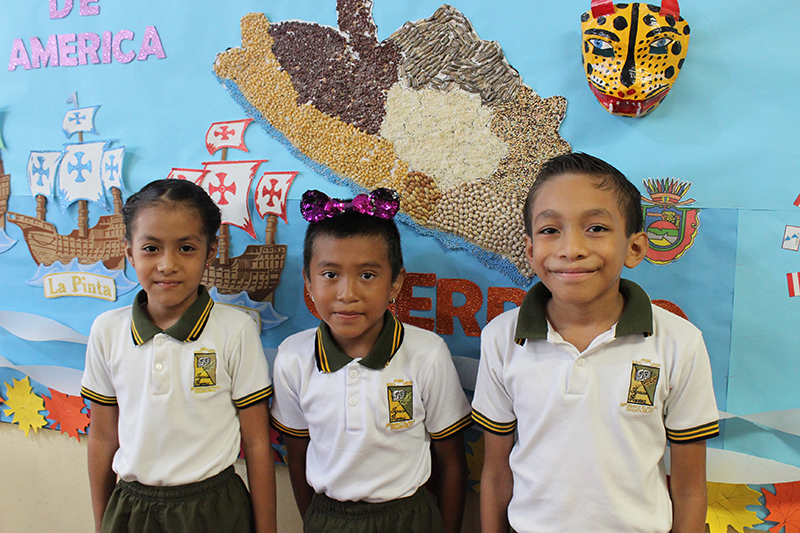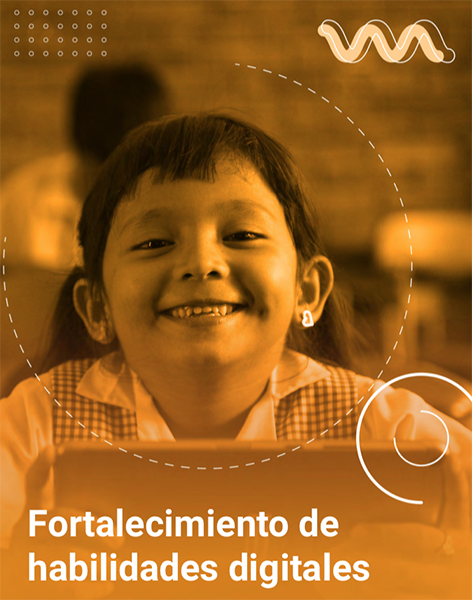Digital education is growing. It does so at an uneven pace, like almost everything in Latin America. While some schools incorporate interactive whiteboards and online learning platforms, others barely have a stable connection or enough devices for every child to touch a keyboard. This visible and persistent gap is not only a matter of resources: it is also a pedagogical and social challenge that forces us to rethink the way we teach and learn.
In this context, the Organization of American States (OAS) and the ProFuturo Foundation, the educational innovation program promoted by Fundación Telefónica and “la Caixa,” decided to join forces to develop the Second Mapping of Good Practices in Digital Education in the Americas. The initiative sought to identify, document, and share educational experiences that, beyond the shine of technology, demonstrate a real capacity to transform the classroom.
A tool to understand, inspire, and transfer
The Second Mapping of Good Practices in Digital Education in the Americas is much more than a simple catalog of projects. It is a tool designed to understand, inspire, and transfer. Its main objective was to identify concrete experiences that use digital technologies as a lever for educational improvement, analyze them rigorously, and share them in an accessible way for those seeking new ways to teach.
The call was open to two types of actors: on one hand, educational institutions (primary schools, secondary schools, and even early childhood centers), and on the other, civil society organizations with projects in formal or non-formal settings. Between October and November 2024, 179 applications were received from 17 countries—a broad sample reflecting the vitality and diversity of the Latin American educational ecosystem.
For an experience to be considered an admissible “good practice,” it had to meet four requirements: be grounded in the right to education, meaningfully integrate digital technologies, provide evidence of results, and have continuity over time. Beyond these minimums, initiatives were evaluated according to five key criteria: relevance (coherence between objectives and actions), centrality of technology (ensuring it was not just a decorative element), systematization (ability to document processes), replicability (capacity to adapt to other contexts), and equity focus (impact on vulnerable populations).
The final product is an inclusive repertoire, encompassing everything from robotics projects in rural areas to teacher training networks on open platforms. Because in this mapping, innovation means both using digital tools and doing so with a clear, socially valuable purpose.
A snapshot of the documented experiences
As mentioned, the mapping gathered a total of 179 experiences—an amount that speaks to the richness and diversity of regional initiatives. The proposals span a remarkable spectrum of geographic, institutional, and pedagogical contexts, demonstrating that educational innovation is not the exclusive domain of large urban centers or better-equipped schools.
In terms of participation by country, Mexico stands out with 37% of the experiences; Colombia with 22%; and Ecuador with 10%. Peru and Argentina also contributed a significant number of projects, confirming that interest in digital education extends from north to south.
The implementation context reveals another important insight. While most practices took place in urban environments (54%), one-third were implemented in mixed areas combining urban and rural zones, and 13% occurred exclusively in rural areas. This last figure is especially relevant because it shows that technology is also reaching (though not without challenges) small schools and remote communities.
By educational level, secondary education predominates (52% of the practices), followed by primary (41%) and, to a lesser extent, early childhood education (4%). This distribution reflects a trend toward prioritizing digital training in intermediate and advanced stages of schooling, where technological literacy becomes critical.
Regarding beneficiaries, 79% of initiatives were directed at students, but more than half also included teachers (54%) and 36% incorporated families or the broader educational community. The inclusive focus is transversal: 114 practices reported being aimed at populations in poverty or vulnerability, 52 at people with disabilities, 46 at migrant populations, and 34 at Indigenous groups.
In total, these actions reached more than 340,000 students and 208,000 teachers—an impact confirming the real, not merely declarative, dimension of these proposals.
What technologies are being used?
A detailed look at the technologies used reveals a pragmatic landscape. There are not many large-scale, cutting-edge deployments. The most common tool remains the computer, present in 85% of the practices. Cell phones follow, appearing in 68% of projects. This figure has a simple explanation: these devices are increasingly ubiquitous and, in many cases, the only available resource for students and teachers.
After these basic supports come learning management platforms (36%), which help organize content, track student progress, and create virtual interaction spaces. Cameras and microphones (47%), tablets (44%), and various multimedia creation programs also appear, showing how these practices rely on combined resources. In fact, most experiences mix technologies: very few use just one tool.
This combination is less a luxury than a strategy to confront scarcity. Many schools make use of what is available: a borrowed projector, a shared mobile phone, free software. The result is a pedagogical approach that does not depend on the sophistication of the device but on its educational purpose.
Still, the mapping also documents a growing interest in interactive technologies. Educational robotics, programming with boards like MicroBit, virtual and augmented reality, and digital content creation are gaining ground in both rural and urban classrooms. Although still in the minority, these tools offer symbolic and methodological value: they show that digital education can be active, creative, and connected to contemporary languages.
Pedagogical purposes: five transformative approaches
Beyond gathering experiences, the mapping asked each institution why it used technology. The answers to this question made it possible to identify five main pedagogical purposes that define the region’s educational priorities.
The first and most common was the development of digital skills, cited by 65% of the practices. This includes projects that teach students to program, use learning platforms, create multimedia content, or understand the virtual environments where much of their lives unfold. In a continent marked by digital skills gaps, this intention is as strategic as it is urgent.
Next is the goal of enriching the teaching of school content (61%). This approach shows that technology is not only an area of knowledge but also a transversal resource that can support the understanding of math, science, language, or history. From using climate simulators to creating educational video games, the experiences confirm that digital tools can enhance learning.
Inclusive and equitable education occupies a prominent place, with 57.5% of practices aimed at serving vulnerable populations: students in poverty, people with disabilities, migrants, or Indigenous communities. Here, technology appears as a compensatory tool capable of reducing distances and offering opportunities where previously only shortcomings existed.
The fourth purpose, reported by 38.5%, is strengthening teacher training and professional development. This is an essential aspect reflecting that teachers are not mere intermediaries but protagonists of educational transformation. Training them in the pedagogical use of technologies and supporting their critical appropriation is necessary for initiatives to thrive.
Lastly, another 38.5% of practices aim to personalize learning, adapting resources and methods to each student’s pace, interests, and needs. This approach—which requires systematic information and flexible technologies—anticipates a paradigm shift in the relationship between schools and students.
It is important to note that many experiences do not focus on a single purpose. A project may simultaneously develop digital skills, enrich curricular content, and serve vulnerable populations. This intersection of goals is one of the mapping’s most valuable features: it shows that educational technology is not a closed compartment but an ecosystem of possibilities that improves access, quality, and continuity of learning.
Beyond technology: what makes a good practice “good”?
A good educational practice is not defined solely by the tool it incorporates, nor even by the number of connected devices in the classroom. The mapping makes it clear that what matters is not the what but the how—and, above all, the why—technology is used.
From the analysis of the 179 experiences, several common elements emerge that explain why certain initiatives achieve real and sustained impact. The first is contextualization: each project begins with a precise diagnosis of its community’s needs. There are no ready-made solutions but tailored responses that consider connectivity levels, prior knowledge, and sociocultural characteristics.
Another essential feature is active participation. The most valuable experiences involve students, families, and teachers as actors who design, produce, and evaluate. This shared commitment strengthens belonging and increases the sustainability of practices.
Systematization is also fundamental. Documenting processes, recording progress, and reflecting on results prevents initiatives from becoming mere anecdotes. Thanks to this documentation, other institutions can draw inspiration and adapt what was learned.
A fourth key aspect is scalability or adaptability. Replicability does not mean copying but identifying principles that can be transferred to other contexts. Projects that use accessible technologies, combine active methodologies, and provide teaching guides are the most valuable in this regard for multiplying impact.
Finally, the equity focus stands out. Evaluating a practice not only by its technical innovation but also by its contribution to educational justice (for example, reducing gender, income, territorial, or disability gaps) is an ethical and political decision. Because in Latin America, innovating is—or should be—above all a way to democratize opportunities.
Impact and continuity: challenges for sustaining good practices
Achieving the creation of an innovative educational experience is already a considerable challenge. But the most complex challenge often comes later: sustaining it over time and making it an organic part of the educational system.
The mapping identifies three conditions necessary for these practices to thrive beyond the individual will of a teacher or the momentary enthusiasm of a school team. The first is continuous training. No technology, however promising, works if those who must implement it lack pedagogical training and support. Ongoing and updated teacher professional development is the foundation on which everything rests.
The second condition is infrastructure: sufficient devices, stable connectivity, and technical maintenance. Many of the initiatives mapped face equipment limitations that condition their reach and sustainability.
The third key factor is institutional support. When school leadership, local administration, and public policies share the conviction that innovation is a priority, practices are more likely to consolidate and be replicated. Without such backing, even the brightest ideas risk fading over time.
In the long term, it is essential to build environments that foster innovation: organizational cultures that value experimentation and tolerate error as part of collective learning. In this process, public–private partnerships and collaborative networks play a decisive role. Articulating resources, sharing experiences, and disseminating results allow individual efforts to become systemic transformation.
Toward meaningful digital education
This Second Mapping of Good Practices in Digital Education in the Americas is a collective snapshot of what is already happening in schools and organizations that, with limited resources but great will and determination, are trying to show us that another kind of education is possible.
The challenge now is to continue sharing, adapting, and expanding these practices so that their impact is not limited to the places where they originated. The value of this mapping lies precisely in offering a living resource, useful for those who believe that educational transformation is built from classrooms, with a vision for the future and a will to change.
To explore these experiences in detail, access the materials, and discover more inspiring cases, you can consult the interactive map and the full publication at:
https://portal.educoas.org/es/redes/bbpp/explora






